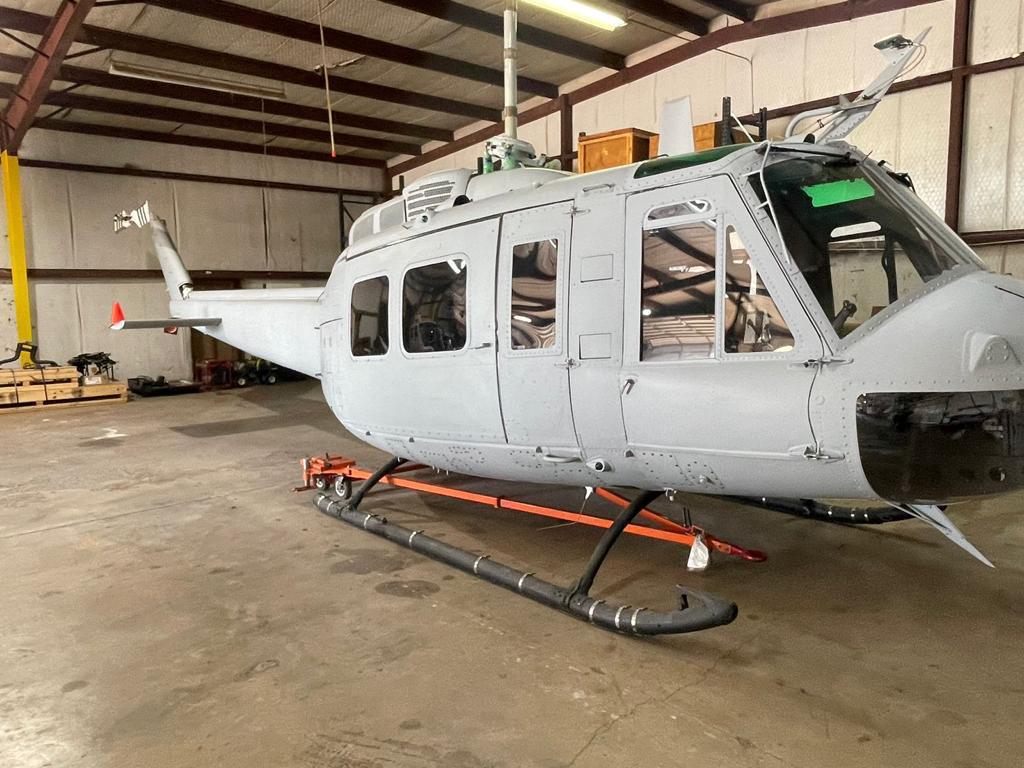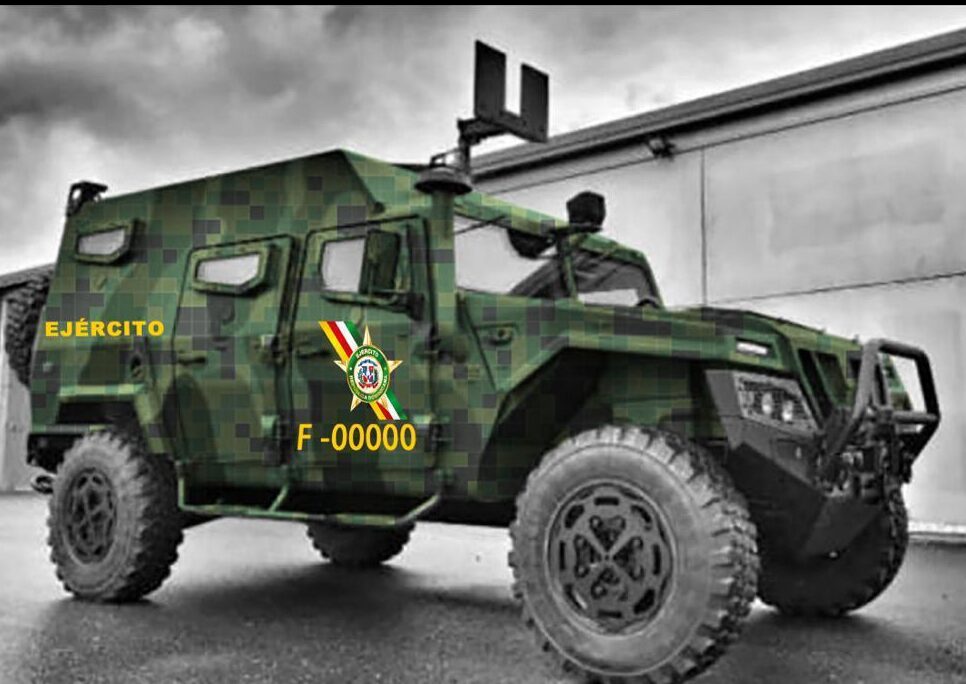Dajabón – President Luis Abinader announced this Sunday, 9 October, the strengthening of border security with the commissioning of robust military equipment and the creation of the Dominican Republic Air Force Southern Command in Barahona, among other measures.
The acquisition of new military equipment includes the replacement of 6 Huey II helicopters, ten new reconnaissance and surveillance aircraft, four anti-riot trucks, to modernize the fleet of the Dominican Republic Army, and 21 armored personnel carriers, equipped with automatic weapons for self-defense.
These armored vehicles, Uro brand, Vamtac ST5 model, with a capacity to transport nine troops, are of the latest generation and constitute the largest acquisition of this type of vehicle by the Dominican government in the last sixty years.

In addition to the purchase of the vehicles, the Dominican government has ordered the updating and modernization of the radio navigation aids, the construction of a new control tower and the transformation of the lighting system at the San Isidro Air Base.
The new helicopters will effectively perform tasks such as aerial reconnaissance and surveillance, tactical operations, personnel transport, search and rescue, medical evacuations, cargo transport, forest fire fighting and training.
In addition to this equipment process, the government has taken measures to improve the living and working conditions of the soldiers serving along the border line, such as the members of the 10th, 11th, 14th and 16th Infantry Battalions, who as of next November will receive an extraordinary monthly incentive of three thousand five hundred pesos in addition to their salary and the benefits they currently receive.
President Abinader also announced the construction of a new housing complex to house 400 new soldiers in a dignified and comfortable manner, and a 5% salary increase, valid for retirement purposes, to all soldiers to be made as of January 2023, in recognition of their years of service to the country as the backbone of national security.

The new measures include the remodeling of the Beller Fortress, in Dajabón, seat of the Tenth Infantry Battalion of the Fourth Brigade of the Army of the Dominican Republic, which will consist of a new hangar for helicopters and armored vehicles, dining room, multipurpose room and other facilities suitable for this type of facilities.
These decisions on equipment, border control and improvement of the living and working conditions of the military, announced by President Abinader, come after repeated calls by the Dominican Government to the international community to take measures to solve the severe Haitian crisis, aggravated after the assassination of President Jovenel Moïse, and the violent armed gangs that have taken control of an important part of Haiti.
The measures place special emphasis on the Dominican Government’s determination to control the illegal entry of immigrants, safeguard the border zone and contribute to formalizing trade for the benefit of both countries, especially in the current unstable conditions in Haiti.
In that order, on February 20, 2022, the Dominican Government started the construction of the first stage of a 54-kilometer intelligent border fence, made of reinforced concrete and metal structure, with 19 surveillance and control towers, 10 access gates for patrolling and 54 kilometers of roads for surveillance and maintenance on both sides.
This fence will have motion and thermal sensors, security cameras and high-capacity military-type drones, among other features. It will be continued with a second stage that will complete a 173-kilometer extension of the 391.6-kilometer border line.
Since his arrival to power, President Abinader has promoted actions to regularize and improve Dominican-Haitian relations, for which he has made it clear, even before the United Nations General Assembly, that although Dominicans are in solidarity with the inhabitants of the neighboring country, the solution to their problems are only their concern and that there will never be a Dominican solution to the Haitian crisis.
During his visit to Dajabón, President Abinader was accompanied by the First Lady Raquel Arbaje; the Minister of Defense, Lieutenant General Carlos Luciano Díaz Morfa; the Commander General of the Army, Major General Carlos Antonio Fernández Onofre; the Director of the Specialized Corps for Border and Land Security (CESFRONT), Brigadier General Frank Mauricio Cabrera Rizek; the Governor of Dajabón, Rosalba Milagros Peña and Congressman Darío Zapata.
Also present were the mayor, Santiago Riverón Arias; the director of the San Ignacio de Loyola Polytechnic, Father José Núñez; the general director of Border Development, Ramón Ernesto Pérez Tejada; the provincial director of Civil Defense, Luciano Domínguez.
Also in attendance were the president of the Chamber of Commerce, Quirino Escoto; the president of the Union of Neighborhood Councils of Dajabón, Blas Hipólito García; the president of the Board of the Livestock Cooperative, Leónidas Ignacio Caraballo; of the Dajabón Tourism Cluster, Carmen Iris Rodríguez; of the Federation of Merchants, Freddy Morillo; of the Union of Mothers’ Centers, Doris Margarita González; and of the Union of Pastors, Fermín Taveras.


